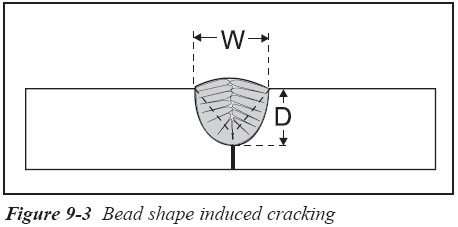
Hello Dave,
first off, thanks a lot for your once again very appropriate response.
Yes, you are certainly right. And even though I have never been confronted with this rule in my personal experience, I have nonetheless read something about it before.
If memory serves right, it was in a close relation to the SMAW welding of High Strength Low Alloy Steels and here again in regard to the use of SMAW in positional welding (fillet welds).
As far as I remember correctly the length of bead deposited had to be limited to a particular value to meet the t8/5 cooling conditions and hereby to meet the mechanical post weld properties of the material. Due to this limitation it appears necessary and of course reasonable to limit the weaving amplitude to limit again the "heat input". I ain't remember if it were 1.5 times the electrode diameter, but however, it could be that it should be 1.5 x the diameter.
Even this was the reason for me to ask "Uncle Chuckles" for more or more detailed information, since it might be that he has meant this "rule" but... it might be also that he did not.
Or to say it with Allan and his great responses and his most excellent statement /quote/:
"(...) Once upon a time there were a fairly limited amount of different materials that were used in most piping, structural, and industrial applications. Now there are a vast quantity of very application specific materials and alloys that require some very specific and controlled joining processes and parameters. Weaving the welding beads can have both detrimental and applicable uses depending upon the materials and their applications. That is why, I believe, in some instances it is acceptable, while in others it is a definite no no. The more important thing to realize is the need to know the difference of when. (...)" /unquote/
This expresses much more exactly what I meant when I wrote /quote/ : "(...) your question is too intricate - and too important - to be answered by a general statement, but must be treated very specifically to the welding application you would like to perform. (...)" /unquote/.
As I said, it were excellent to receive somewhat more precise background information of the initiator of this interesting thread. Even since the high number of materials (both parent- and filler), consumables (shielding gases, fluxes,...), processes, ..., allows an almost infinite number of variations making it at least in my humble opinion nearly impossible to answer the question in a general way. And furthermore, I assume honestly that every thread initiator has had his/her own ideas and thoughts on a particular issue before he/she is going to start a thread in the forum. And even thsese thoughts - as far as they were existing - were interesting to get to know. ;-)
Thanks and best regards,
Stephan

